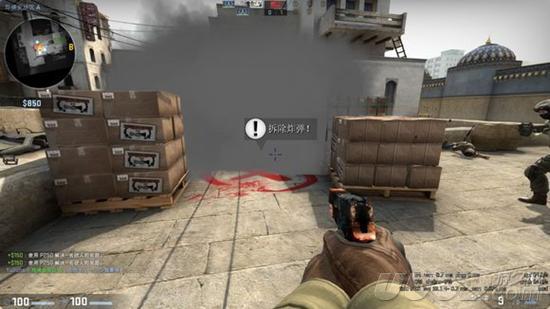基于arduino的恒温控制(打印的室内温度计)

天冷了,养热带花草和宠物的同学们需要多留意室内温度。下面给大家推荐一个实用性强、制作简单的温度计。使用 DS18B20 温度传感器和 OLED 模块构建,这里使用的开发板是 Piksey Pico,代码是兼容 Arduino 的,你也可以使用 Arduino 来完成它。制作步骤配有视频:
材料清单

Arduino 或 Piksey Pico × 1DS18B20 温度传感器 × 10.96 英寸 OLED 模块 × 1电平转换器模块 × 1
编程和测试1、将代码文件上传至 Arduino。

2、显示器上的图形可以根据自己的具体情况来修改。

3、将所有的组件安装到面包板上。接线方式如图所示。

代码如下:
#include <Arduino.h>
#include <U8g2lib.h>
#include <OneWire.h>
#include <DallasTemperature.h>
#ifdef U8X8_HAVE_HW_SPI
#include <SPI.h>
#endif
#ifdef U8X8_HAVE_HW_I2C
#include <Wire.h>
#endif
/*
U8glib Example Overview:
Frame Buffer Examples: clearBuffer/sendBuffer. Fast, but may not work with all Arduino boards because of RAM consumption
Page Buffer Examples: firstPage/nextPage. Less RAM usage, should work with all Arduino boards.
U8x8 Text Only Example: No RAM usage, direct communication with display controller. No graphics, 8x8 Text only.
This is a page buffer example.
*/
// Please UNCOMMENT one of the contructor lines below
// U8g2 Contructor List (Picture Loop Page Buffer)
// The complete list is available here: https://github.com/olikraus/u8g2/wiki/u8g2setupcpp
// Please update the pin numbers according to your setup. Use U8X8_PIN_NONE if the reset pin is not connected
U8G2_SSD1306_128X64_NONAME_1_SW_I2C u8g2(U8G2_R0, /* clock=*/ SCL, /* data=*/ SDA, /* reset=*/ U8X8_PIN_NONE); // All Boards without Reset of the Display
// End of constructor list
#define SUN 0
#define SUN_CLOUD 1
#define CLOUD 2
#define RAIN 3
#define THUNDER 4
char i=0;
/********************************************************************/
// Data wire is plugged into pin 2 on the Arduino
#define ONE_WIRE_BUS 2
/********************************************************************/
// Setup a oneWire instance to communicate with any OneWire devices
// (not just Maxim/Dallas temperature ICs)
OneWire oneWire(ONE_WIRE_BUS);
/********************************************************************/
// Pass our oneWire reference to Dallas Temperature.
DallasTemperature sensors(&oneWire);
/********************************************************************/
void drawWeatherSymbol(u8g2_uint_t x, u8g2_uint_t y, uint8_t symbol)
{
// fonts used:
// u8g2_font_open_iconic_embedded_6x_t
// u8g2_font_open_iconic_weather_6x_t
// encoding values, see: https://github.com/olikraus/u8g2/wiki/fntgrpiconic
switch(symbol)
{
case SUN:
u8g2.setFont(u8g2_font_open_iconic_weather_6x_t);
u8g2.drawGlyph(x, y, 69);
break;
case SUN_CLOUD:
u8g2.setFont(u8g2_font_open_iconic_weather_6x_t);
u8g2.drawGlyph(x, y, 65);
break;
case CLOUD:
u8g2.setFont(u8g2_font_open_iconic_weather_6x_t);
u8g2.drawGlyph(x, y, 64);
break;
case RAIN:
u8g2.setFont(u8g2_font_open_iconic_weather_6x_t);
u8g2.drawGlyph(x, y, 67);
break;
case THUNDER:
u8g2.setFont(u8g2_font_open_iconic_embedded_6x_t);
u8g2.drawGlyph(x, y, 67);
break;
}
}
void drawWeather(uint8_t symbol, int degree)
{
drawWeatherSymbol(0, 55, symbol);
u8g2.setFont(u8g2_font_logisoso32_tf);
u8g2.setCursor(48 3, 55);
u8g2.print(degree);
u8g2.print("°C"); // requires enableUTF8Print()
}
/*
Draw a string with specified pixel offset.
The offset can be negative.
Limitation: The monochrome font with 8 pixel per glyph
*/
void drawScrollString(int16_t offset, const char *s)
{
static char buf[36]; // should for screen with up to 256 pixel width
size_t len;
size_t char_offset = 0;
u8g2_uint_t dx = 0;
size_t visible = 0;
len = strlen(s);
if ( offset < 0 )
{
char_offset = (-offset)/8;
dx = offset char_offset*8;
if ( char_offset >= u8g2.getDisplayWidth()/8 )
return;
visible = u8g2.getDisplayWidth()/8-char_offset 1;
strncpy(buf, s, visible);
buf[visible] = '\0';
u8g2.setFont(u8g2_font_8x13_mf);
u8g2.drawStr(char_offset*8-dx, 62, buf);
}
else
{
char_offset = offset / 8;
if ( char_offset >= len )
return; // nothing visible
dx = offset - char_offset*8;
visible = len - char_offset;
if ( visible > u8g2.getDisplayWidth()/8 1 )
visible = u8g2.getDisplayWidth()/8 1;
strncpy(buf, s char_offset, visible);
buf[visible] = '\0';
u8g2.setFont(u8g2_font_8x13_mf);
u8g2.drawStr(-dx, 62, buf);
}
}
void draw(const char *s, uint8_t symbol, int degree)
{
int16_t offset = -(int16_t)u8g2.getDisplayWidth();
int16_t len = strlen(s);
for(;;)
{
u8g2.firstPage();
do {
drawWeather(symbol, degree);
// drawScrollString(offset, s);
} while ( u8g2.nextPage() );
delay(20);
offset =2;
if ( offset > len*8 1 )
break;
}
}
void setup(void) {
/* U8g2 Project: SSD1306 Test Board */
pinMode(10, OUTPUT);
pinMode(9, OUTPUT);
/* U8g2 Project: T6963 Test Board */
//pinMode(18, OUTPUT);
//digitalWrite(18, 1);
/* U8g2 Project: KS0108 Test Board */
//pinMode(16, OUTPUT);
//digitalWrite(16, 0);
/* U8g2 Project: LC7981 Test Board, connect RW to GND */
//pinMode(17, OUTPUT);
//digitalWrite(17, 0);
/* U8g2 Project: Pax Instruments Shield: Enable Backlight */
//pinMode(6, OUTPUT);
//digitalWrite(6, 0);
u8g2.begin();
u8g2.enableUTF8Print();
sensors.begin();
}
void loop(void) {
sensors.requestTemperatures();
u8g2.firstPage();
do {
drawWeather(SUN_CLOUD, sensors.getTempCByIndex(0));
} while ( u8g2.nextPage() );
delay(1000);
}
或在项目文件库中下载。https://make.quwj.com/project/180
3D 打印外壳

这个外壳最初只能容纳 OLED 模块。最后通过对 Piksey Pico 进行修改,我将所有组件都装进去了。如果你使用的是 Arduino Nano 或 UNO,那么外壳就只能容纳显示器,其他电子设备必须放在外面。
外壳的 3D 打印文件在项目文件库中下载:https://make.quwj.com/project/180
接线测试


布线方式可根据自己的习惯来。在项目中,我使用的是多股线,效果不错。最终的布线方式,会根据你的实际情况来,可能会与我的有些不同。


布线完毕后开始测试,确保一切正常后再进行组装。
组装所有的配件

最后,当所有的配件安装完毕后,将外壳合上。注意安装时不要对 OLED 模块用力过猛,以免造成破损。


到目前为止,整个项目就完成了,非常的简单。
,免责声明:本文仅代表文章作者的个人观点,与本站无关。其原创性、真实性以及文中陈述文字和内容未经本站证实,对本文以及其中全部或者部分内容文字的真实性、完整性和原创性本站不作任何保证或承诺,请读者仅作参考,并自行核实相关内容。文章投诉邮箱:anhduc.ph@yahoo.com






